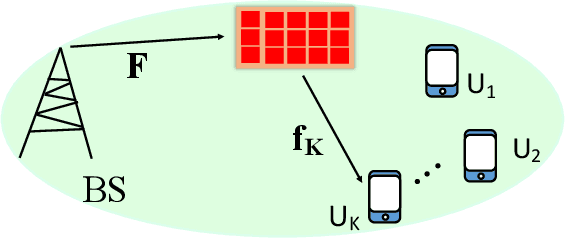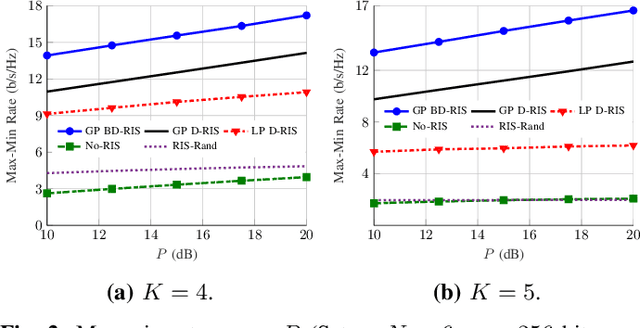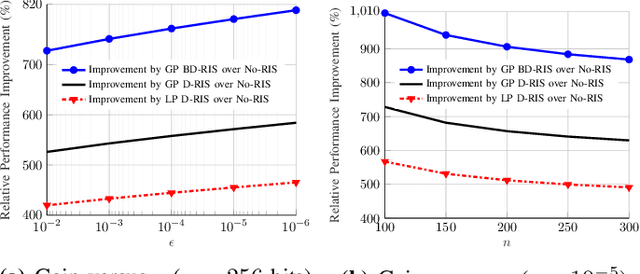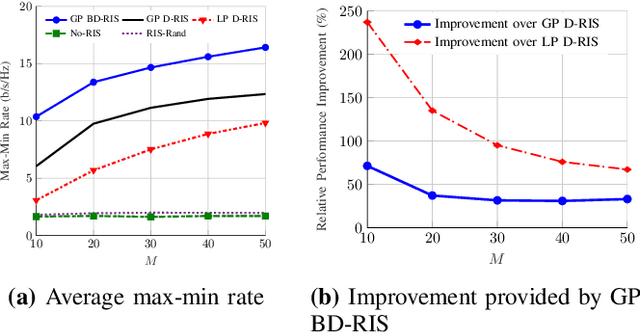Rate Region of RIS-Aided URLLC Broadcast Channels: Diagonal versus Beyond Diagonal Globally Passive RIS
Paper and Code
Oct 28, 2024



We analyze the finite-block-length rate region of wireless systems aided by reconfigurable intelligent surfaces (RISs), employing treating interference as noise. We consider three nearly passive RIS architectures, including locally passive (LP) diagonal (D), globally passive (GP) D, and GP beyond diagonal (BD) RISs. In a GP RIS, the power constraint is applied globally to the whole surface, while some elements may amplify the incident signal locally. The considered RIS architectures provide substantial performance gains compared with systems operating without RIS. GP BD-RIS outperforms, at the price of increasing the complexity, LP and GP D-RIS as it enlarges the feasible set of allowed solutions. However, the gain provided by BD-RIS decreases with the number of RIS elements. Additionally, deploying RISs provides higher gains as the reliability/latency requirement becomes more stringent.
 Add to Chrome
Add to Chrome Add to Firefox
Add to Firefox Add to Edge
Add to Edge